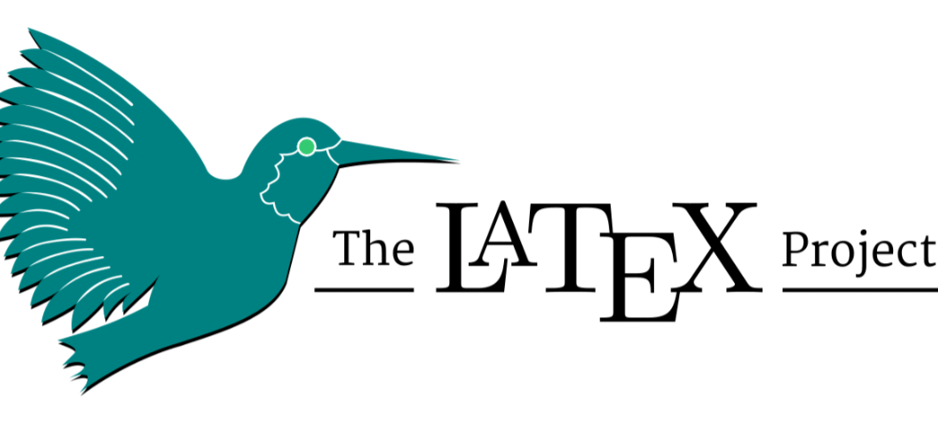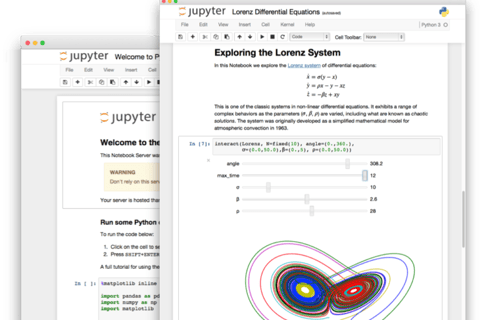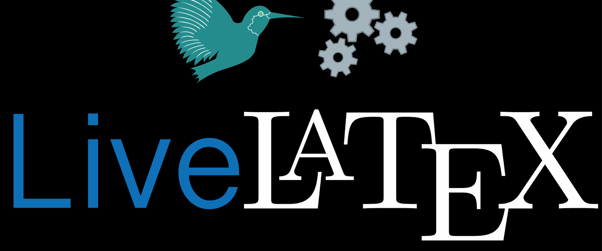Mastering LaTeX: The Secret Weapon for Startups, Agencies, and Associations
Discover how mastering LaTeX transforms document workflows for startups, agencies, and associations. From automated pitch decks to scalable annual reports, learn why LaTeX is the ultimate tool for precision, collaboration, and efficiency. Optimize your projects today
BRAND GROWTH
3/7/20258 min read


Introduction to LaTeX
LaTeX, a typesetting system created by Leslie Lamport in the early 1980s, has gained prominence as a powerful tool for producing high-quality documents. Unlike traditional word processors, LaTeX separates the content from the formatting, allowing users to focus on the structure and substance of their work. This makes it particularly advantageous for startups, agencies, and associations that require a professional presentation of research papers, reports, and other formal documents.
The significance of LaTeX lies in its ability to handle complex documents with ease. Whether it's an academic paper laden with intricate equations, a technical manual, or a comprehensive proposal for a client, LaTeX excels in rendering precise layouts and typographic excellence. As a markup language, it enables writers to generate documents that are not only visually appealing but also maintain consistency across various components such as tables, figures, and references.
Startups often leverage LaTeX to produce well-structured business plans or grant applications that demand a level of professionalism that can markedly differentiate them from competitors. Similarly, agencies rely on LaTeX to create visually appealing reports and presentations that impress clients and stakeholders alike. For associations that cater to a scholarly audience or involve members who value research accuracy, LaTeX provides the means to present information in a clear and systematic way, enhancing readability through structured outputs.
In contrast to other document creation tools, which may prioritize ease of use over precision, LaTeX offers an environment that encourages a thorough understanding of typesetting principles. While it may have a steeper learning curve, the benefits it yields in terms of document quality and productivity far outweigh the initial challenges. As we explore deeper into LaTeX’s many features and advantages in subsequent sections, it becomes clear why this tool is regarded as a secret weapon among professionals in various fields.
How to write LaTeX
LaTeX is a powerful typesetting system widely used for producing scientific and mathematical documents due to its precise control over document layout and formatting. If you're wondering "how do I write in LaTeX," the first step is to install a LaTeX distribution like TeX Live or MiKTeX. Once installed, you can create a .tex file using any text editor. Begin with the document class declaration, such as `\documentclass{article}`, followed by the `\begin{document}` command and your content. Utilize LaTeX commands for structuring your text, including sections, subsections, and formatting options. To include mathematical equations, use the dollar sign to encapsulate equations, for example, $E=mc^2$.
Finally, compile your document using a LaTeX editor or command-line tools to produce a well-formatted PDF. With practice, writing in LaTeX becomes intuitive, allowing you to focus on your content rather than formatting.
Streamlining Document Creation for Startups with LaTeX
Startups often operate under tight deadlines and the constant pressure to present their ideas and concepts effectively. Utilizing LaTeX can be a game-changer in streamlining document creation processes. LaTeX is a powerful typesetting system that enables startups to produce polished, professional documents with significantly less effort than traditional word processors.
One of the primary advantages of using LaTeX is the reduction in formatting time. Startups can focus their efforts on content rather than getting bogged down in the intricacies of document design. By employing LaTeX templates, pitch decks, and whitepapers can be formatted uniformly, ensuring consistency across all documentation. This consistency not only improves the overall quality of presentations but also helps to establish a strong brand identity.
Moreover, the intelligent handling of typesetting and references by LaTeX allows teams to prioritize their messaging. For example, a burgeoning tech startup implemented LaTeX to create its pitch decks, achieving a remarkable 30% reduction in documentation time. By automating aspects such as bibliographic references and complex equations, LaTeX enables startups to emphasize their core ideas without getting distracted by formatting issues.
LaTeX’s capabilities extend even further with its integration of visual elements, such as charts and graphs. Startups can incorporate data-driven visualizations directly into their documents, enhancing the reader’s understanding and engagement with the information presented. This level of detail and professionalism can lead to increased client interest and investor confidence, crucial factors for startups seeking to establish themselves in competitive markets.
Incorporating LaTeX into the document creation workflow of startups not only enhances efficiency but also elevates the quality of the produced materials, allowing them to effectively compete in the fast-paced business landscape.
Elevating Client Reports and Data Visualization for Agencies
Agencies are increasingly tasked with delivering high-quality reports that not only convey essential information but also present data in visually appealing formats. LaTeX has emerged as a robust tool that facilitates the creation of systematic reports and intricate data visualizations, thus enhancing the overall quality of client deliverables. Its strength lies in its ability to handle complex typesetting and formatting, making it a favored choice among agencies focused on precision and professionalism.
One of the significant advantages of LaTeX is its extensive range of packages designed specifically for data visualization. Tools like TikZ and PGFPlots allow agencies to create sophisticated graphs and diagrams directly from data sets, rendering visuals that are both aesthetically pleasing and informative. By leveraging these features, agencies can produce charts that aren't just functional but also adhere to their brand’s identity, thus providing consistency in client presentations and reports.
Furthermore, LaTeX excels at managing large volumes of data. Its referencing system and bibliographic management features allow agencies to efficiently incorporate and cite data from various sources without compromising on the report’s integrity. This is particularly beneficial for agencies that must compile extensive reports, as it significantly reduces the potential for errors and enhances the ease of navigation through complex documents.
To illustrate the practical benefits of LaTeX, several agencies have successfully implemented this tool in their operations. For instance, a digital marketing agency utilized LaTeX to generate monthly performance reports, impressing clients with visually engaging data representations. A research-focused agency adopted LaTeX for publishing its findings, establishing itself as a leader in the industry by consistently delivering high-caliber documents.
In summary, LaTeX stands out as a powerful asset for agencies aiming to elevate their client reports and data visualizations. By utilizing its advanced features, agencies can provide clients with documents that not only inform but also impress, fostering stronger professional relationships and enhancing their reputation in the competitive marketplace.
Creating Comprehensive Documentation for Associations
Associations often require meticulous documentation to meet various operational and regulatory needs. One of the most critical aspects of this is the production of annual reports and compliance manuals, which demand precision, clarity, and a professional appearance. LaTeX stands out as an exceptional tool for these tasks, particularly due to its capability of managing large documents with complex formatting requirements. By utilizing LaTeX, associations can ensure that their publications reflect the high standards expected by their members and stakeholders.
One prominent example of an association that has successfully adopted LaTeX is the American Mathematical Society (AMS). The AMS utilizes LaTeX to produce their annual report, which includes extensive data, graphs, and intricate formatting. LaTeX allows for precise layout control, which is essential when dealing with mathematical symbols and structures. This ensures that the reports are not only aesthetically pleasing but also highly functional, providing clarity of information to readers.
Furthermore, when it comes to compliance manuals, associations often need to integrate various elements such as legal texts, charts, and footnotes. The ease with which LaTeX handles cross-referencing and bibliographies is another advantage. For instance, the International Association for the Properties of Water and Steam (IAPWS) employs LaTeX for their compliance documentation. By doing so, they have streamlined their documentation processes and improved the quality of their materials. The automated table of contents and indexing features in LaTeX significantly reduce the time spent on document organization, allowing associations to focus on the content's substance.
In addition to these examples, many other associations have leveraged LaTeX to enhance their documentation efforts, illustrating its potential to transform how organizations produce complex publications. This powerful typesetting system not only elevates the quality of documents but also simplifies the maintenance and updating processes, ultimately benefiting associations of all sizes.
Advantages of LaTeX Over Word Processing Software
LaTeX offers several advantages over traditional word processing software, making it an essential tool for many professionals, particularly in academia and technical fields. One of the key benefits of LaTeX is its superior typesetting capabilities. Unlike typical word processors that handle formatting within the document itself, LaTeX allows users to separate content from formatting. This means that writers can focus on their content without worrying about the intricacies of layout and typography, resulting in consistently high-quality documents. LaTeX’s algorithm intelligently manages spacing, alignment, and font selection, leading to more polished final products.
Another significant advantage is version control. In collaborative environments, using LaTeX can streamline the editing process. Since LaTeX files are plain text, they can be easily tracked and managed using version control systems such as Git. This contrasts with traditional software, where document versions may be scattered or untraceable. LaTeX's inherent compatibility with such systems promotes better collaboration among team members, allowing for clear tracking of modifications and easy rollback to previous document states.
Collaboration capabilities are further enhanced by LaTeX’s use of a structure-oriented approach. Users can modularize their documents using separate files for various sections, enabling multiple authors to work simultaneously on different segments without conflicts. This structured approach minimizes formatting errors since LaTeX takes care of the overall styling and organization, ensuring a uniform appearance throughout the document regardless of the number of contributors.
In conclusion, the advantages of LaTeX—including its advanced typesetting, robust version control, and superior collaboration capabilities—make it a powerful alternative to conventional word processing software. For startups, agencies, and associations, adopting LaTeX can significantly enhance productivity and document quality, ultimately contributing to a more efficient workflow.
Key Skills to Master LaTeX
Mastering LaTeX requires a set of foundational skills that can empower users to create professional-looking documents with ease. One of the first skills that beginners should focus on is learning how to utilize templates. LaTeX offers numerous pre-defined templates that can significantly speed up the document creation process. By understanding where to find these templates and how to modify them, users can create everything from resumes to research papers efficiently. Several platforms provide free access to a variety of templates, making it easy for newcomers to start their projects.
Another essential skill is creating and formatting equations. LaTeX is renowned for its exceptional capability to handle mathematical notations and complex equations, which is particularly beneficial for startups and agencies in scientific and technical fields. Beginners should familiarize themselves with the basic syntax for inserting mathematical symbols and equations. Learning how to structure equations correctly will not only enhance the appearance of documents but also improve clarity and precision in communication.
Collaboration is crucial in any professional environment, and LaTeX facilitates this through platforms like Overleaf. This web-based LaTeX editor allows multiple users to work on documents simultaneously, making it a powerful tool for teams. To master collaboration in LaTeX, users should learn how to effectively share documents, use comments for discussions, and manage version control. Understanding these collaborative features can greatly enhance teamwork, particularly for startups and agencies that require rapid iterations of their documents.
As beginners embark on their journey with LaTeX, they should embrace a gradual learning approach. Utilizing resources like online tutorials, community forums, and documentation can demystify the platform and build confidence. Ultimately, by mastering these skills, users will not only feel comfortable using LaTeX but will also unlock its full potential to create high-quality, professional documents.
Free Resources for Learning LaTeX
Learning LaTeX can be a rewarding endeavor, especially for startups, agencies, and associations aiming to produce high-quality documents. Fortunately, numerous free resources exist that cater to a wide range of skill levels, from beginners to advanced users. Utilizing these resources can significantly enhance your proficiency in LaTeX and facilitate the process of document creation.
One of the best starting points for newcomers is the LaTeX Project’s official tutorials. This website hosts a collection of instructional materials that introduce the fundamentals of LaTeX, including document structure, typesetting, and basic commands. Beginners will find these tutorials clear and straightforward, making the learning curve more manageable.
For those who prefer an interactive approach, Overleaf offers a collaborative online LaTeX editor with a rich set of templates and rich documentation. As a cloud-based platform, Overleaf allows multiple users to work on the same document in real-time, which is particularly beneficial for team projects. The platform also provides quick-start guides to help users become accomplished in LaTeX formatting.
Forums and discussion boards, such as TeX Stack Exchange, are invaluable for users seeking community support. This question and answer site caters specifically to LaTeX users, allowing them to ask questions and share solutions. Engaging with experienced users can deepen one's understanding and enable new learners to solve problems they might encounter.
Comprehensive documentation, such as the Not So Short Introduction to LaTeX, provides a deeper exploration of the typesetting system, making it useful for intermediate users. Lastly, online video tutorials available on platforms like YouTube can provide visual support and demonstrations that reinforce learning. By exploring these diverse resources, users can build confidence and proficiency in harnessing the powerful capabilities of LaTeX.












